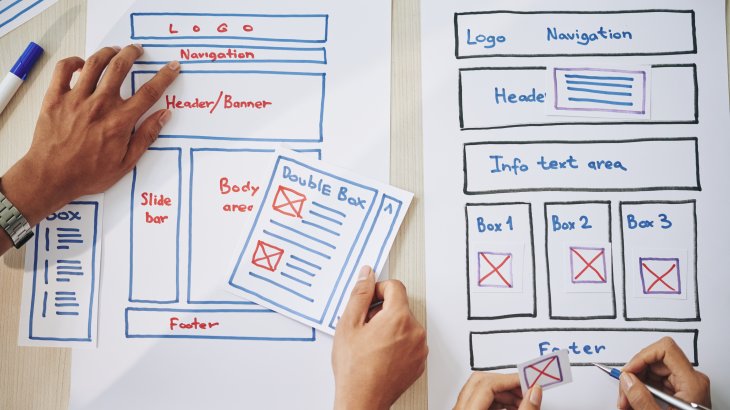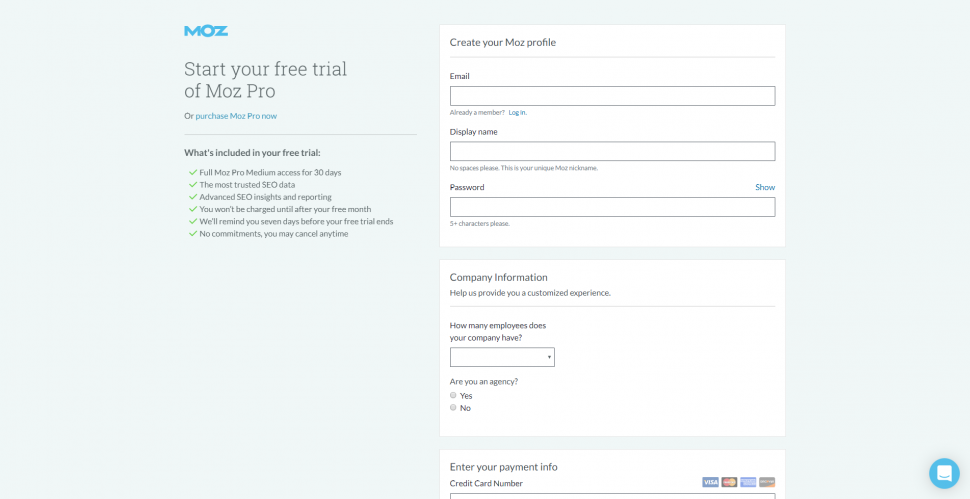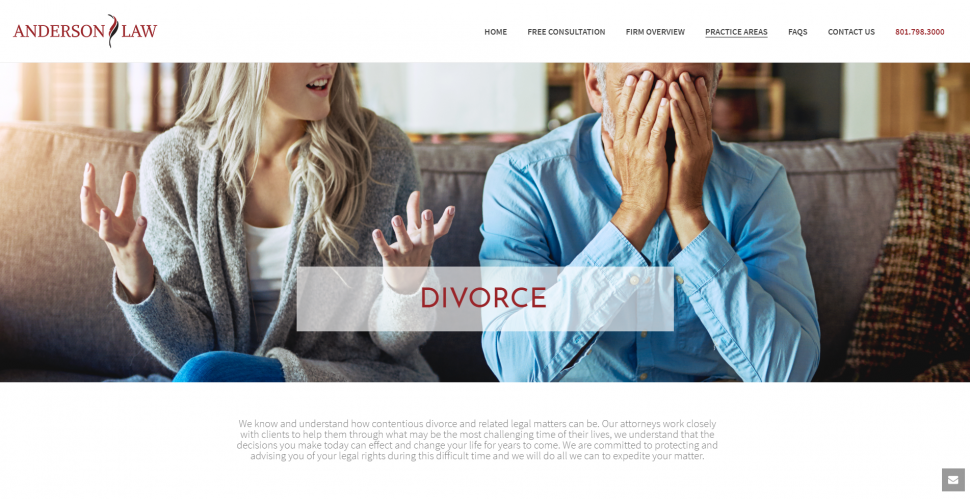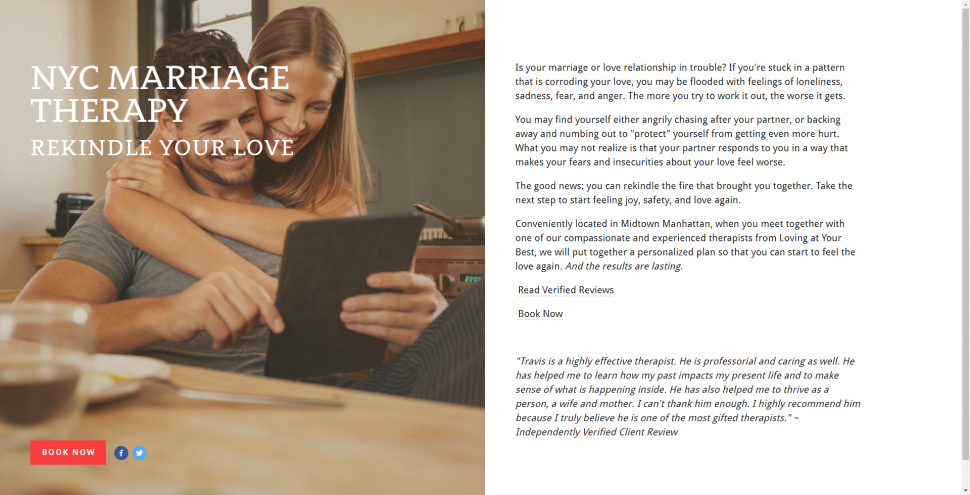Landing pages are one of the key elements in a digital marketing campaign. They persuade visitors to take action, such as to make a purchase or submit a contact form. When done right, a landing page can result in a new lead or sale. There are several different types of landing pages, and each one has unique benefits depending on the end goal. Choosing the right one will greatly impact the success of your campaign.
A landing page is a web page that a user lands on after clicking a link, which is typically an ad. If you are putting in the time and funds to launch an ad for your business, you want a landing page that will convert. This breakdown of the different types of landing pages will help you decide which one you should be using for your startup.
1. Squeeze Page
The squeeze page is the quintessential landing page. Also known as a lead capture page or an opt-in page, the squeeze page aims to squeeze information out of the visitor. This information is typically personal data, such as a name, email, and/or phone number. In exchange for the personal data, the user often receives some type of offer. The offer could be a:
- Free trial
- Downloadable content, such as an e-book, white paper, infographic, podcast episode, or price sheet
- Email list sign-up
A squeeze page usually contains a call-to-action button for the visitor to submit their information and no other navigation. The business can then use the visitor’s details to target them with email marketing, text message marketing, or social media marketing campaigns. A squeeze page usually has a headline, copy, one or two images, and a form.
The best squeeze pages contain convincing copy about the offer and a form that is simple to find and to fill out. The submit button should also be obvious and easy to find. View an example of a squeeze page here.
When to Use a Squeeze Page
Startups that are trying to build their email list should consider offering gated content on a squeeze page. Gated content is online material that is only accessible in exchange for personal data, such as a phone number or email.
Squeeze pages are also great for tech startups that are in a beta stage. Visitors will be required to enter their personal details in order to access the technology. Some businesses use a squeeze page by requiring an email for those who want to view the price of the services or learn more detailed information about the business. The business can then use the person’s contact information to either target them with ads or contact them through email or a phone call.
2. Long-Form Landing Page
Long-form landing pages, also known as sales letters, are the infomercials of the digital marketing world. They focus on the benefits of the product, and they repeat the benefits over and over until the reader is convinced that they have to purchase what the business is offering. The long-form landing page explains every part of the offer to the visitor.
The longer a person spends on this type of landing page, the higher the chance that they will convert. Great copy pulls the visitor down the page and reassures them that they are making the right decision. Ideally, the words will have an exciting tone and the visitor will experience some FOMO (fear of missing out) while reading the content. The solution to the FOMO, which is the landing page’s offer, should be clear to the visitor.
This type of landing page requires very well-written and purposeful content. It should include an element of storytelling, which guides the reader through the copy and keeps them interested. Typically, the word count for a long-form landing page is more than 7,000. The copy can be organized into paragraphs, bullet points, lists or pull quotes. Testimonials also tend to be part of a long-form sales letter. View an example of a long-form landing page here.
When to Use a Long-Form Landing Page
Long-form landing pages can be used for various reasons, but they are generally used to sell an item. This type of landing page should target people who are at the bottom of the sales funnel and are ready to purchase. These landing pages should also be used with people who are likely to read through at least some of the copy.
Due to the large amount of copy on long-form landing pages, they require a lot of time to make and should be worth the investment. Offer the visitors something they can buy, and consider adding an upsell as well. Keep in mind that the more expensive the offer, the longer the copy should be. The visitor likely needs the extra words to explain why they should take action and convince them to make the purchase.
3. Click-Through Landing Page
This type of landing page provides just enough context to persuade people to visit a transaction page. Click-through landing pages warm up the leads so they are more likely to convert to a sale. The page contains sufficient details about the offer, focusing on the benefits and a general explanation of the product or service.
This is a simple page with no navigation out of the page. The only button on a click-through landing page is the one that leads the visitor to a page where they can make a purchase. A click-through landing page doesn’t need to be excessive in length, but it should let the visitor know why they should make the purchase.
A click-through landing page contains, at a minimum, a headline, a list of benefits, some form of a visual, and a call to action button. It can also include videos, testimonials, contact information for the business, and additional copy. View an example of a click-through landing page here.
When to Use a Click-Through Landing Page
Click-through landing pages are perfect for consumers who are interested in buying but might be intimidated by a “Buy” button. They are mostly used by e-commerce businesses that are trying to sell a product. These landing pages can also be used for gated content such as e-books and white papers.
The benefit of a click-through landing page is that the visitor can read all of the details about the product without feeling stressed to buy. The copy should be compelling and informational, and the call to action button should be friendly, not pushy.
4. Product Details Page
A product details page exists on a business’ main website. These pages provide all of the information about a product or service. Visitors are able to read all of the information about the product and either complete the purchase or contact a sales representative to learn more about the offer.
Most landing pages don’t have any navigation out of the page, but a product details page is different. It can have outside navigation, including a website menu. This type of landing page usually includes a photo of the product, as well as important details about the offer. Testimonials or other forms of social proof are also important elements of a good product details page. View an example of a product details page example here.
When to Use a Product Details Page
Because a product details page is located within the structure of the main website, it is easy to create. Most businesses use this type of page to describe their products or services for both organic and paid visitors.
Businesses that are pushing a certain product or service seasonally should create a top-notch product details page. With the right details, visuals and copy, a product details page can drastically increase conversion rates.
5. Video Landing Page
As the name suggests, a video landing page includes a sales video. The video is the main focus of this type of landing page, so it is usually located above the fold. A video landing page might have just a video, or it might have a video and some complementary text. To encourage visitors to watch the video, some businesses only make the offer or form available after the visitor watches all — or at least a sufficient portion of — the video.
The video should explain the value of the product or service and build hype for it. It should be a few minutes long, but not so long that the viewer loses interest. A video landing page should include a headline and a video, but other copy and visuals can help, too. They can be used for expensive products or for gated content. View an example of a video landing page here.
When to Use a Video Landing Page
In a world with dwindling attention spans, videos are performing very well. Videos are engaging, and they keep a viewer’s attention for longer than a typical web page does. The constant movement keeps people watching for longer. Plus, many people remember videos more than they do words on a screen.
Almost any kind of business can use a video landing page. Videos are especially great for selling products or services that are photogenic, or for businesses that are offering a course. Videos are similar to long-form sales letters, because they talk the consumer through all of their concerns.
Which Landing Page Should You Use?
There is no perfect landing page design that works for every product or service. Use this guide of landing pages as a reference as you plan your digital marketing campaign. If you are debating between two different landing page styles, consider A/B testing the pages to see which one performs better. The best landing page for your startup depends on your business, what you are selling, and your audience.









Amazing article on landing pages Carolyn! Could it be that a product can have multiple landing pages?
Hello, Alina. Yes, it could make sense to have multiple landing pages for one product. An example of when that might be a good idea is when you are marketing a product to different audiences. Each one might respond better to a different type of page.